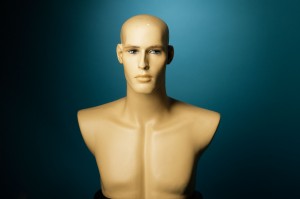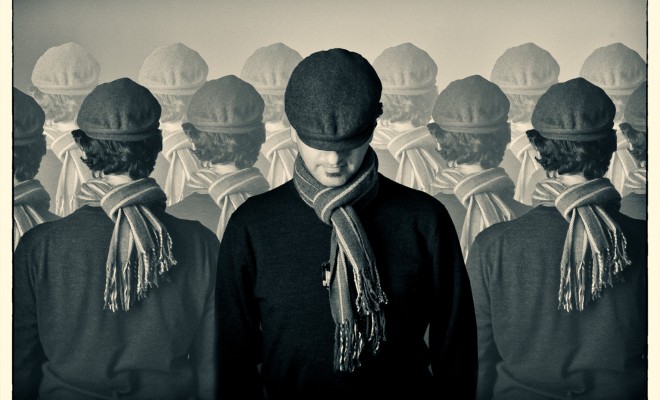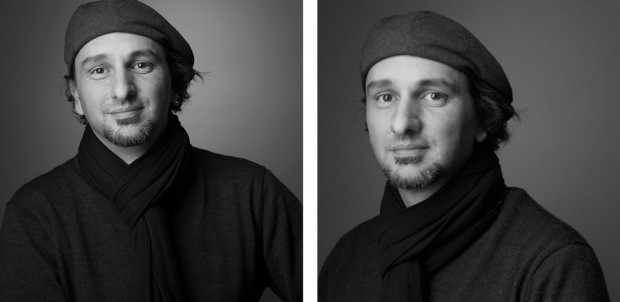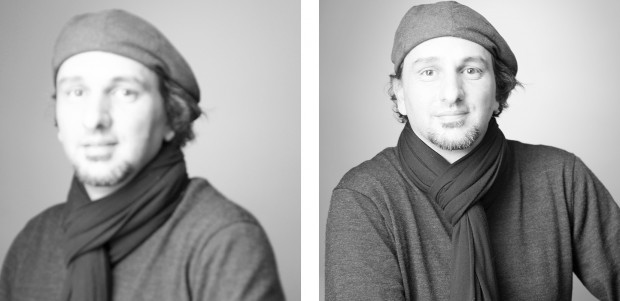There are times when someone see an amazing image and tells the photographer, that their camera really takes great photos. Thought I’ll test this theory to see if it’s the type of camera used, or a photographer’s knowledge and years of experience in lighting, composition and exposure, that creates an amazing image.
Set up a controlled experiment in the studio where, lighting, background, subject matter (me, yes not that exciting), and camera settings, were all the same. The two variables were the Pro Nikon D3s verses the compact Leica Delux6 camera, and the manual verses program setting used to take these images. I’ve provided a schematic of the studio lighting setup for those interested. Other than the crop, these portraits are straight out of camera.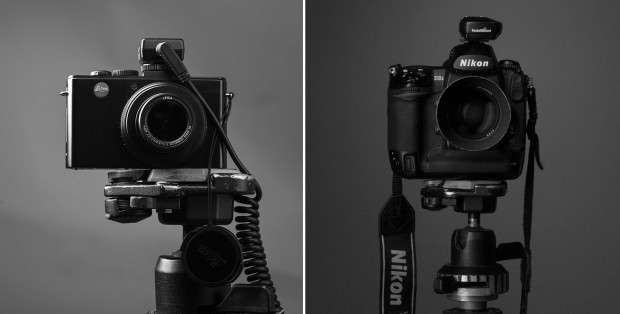
Initially with the classical low key lighting setup, it was all about getting the lighting ratios and camera settings correct, to show where I wanted the shadows and highlights to fall on the subject. It’s a little fiddly taking selfies in the studio with two different cameras but my studio assistant Ian was a great help.
After metering the light and positioning the studio flashes, both cameras we set with the same manual settings, f8, 1/125, ISO200 with an 85mm focal length. With the same manual setting I told both cameras what to expose for. From the two images below, they both produced very similar results but nothing too obvious that you could easily tell which camera produced which image.
Then I flicked the switch to Program mode where both cameras tells me what they thinks is the best exposure, based on the available light. The cameras sensor measured the low light in the studio and tried to overcompensate with a long exposure. What the cameras couldn’t measure was that during the long exposure, the studio flashes would fire automatically, resulting in the two blown out images below. These blown out results make it quiet obvious that, in Program mode, how I see the final image and what the camera sees are very different.
A great photo doesn’t need a fancy camera. It needs;
- amazing light,
- an understanding of how to read and paint with light to produce highlights, tones and depth,
- knowing the rules of composition and exposure and when to break these rules, and
- above all, the ability to combine the above three points and consistently produce great photos based on the artistic vision you had for the final image.
Left to their own devices, (Program mode), cameras don’t always produce consistently great photos. This is where a photographer with years of experience in lighting, composition and exposure comes into play.
If you have any questions on how to use your DSLR camera to improve your photography please feel free to leave me a reply below or share this post on Facebook or Twitter.
P.S. I would like to thank Ian for helping out with the lighting even though he has no arms.